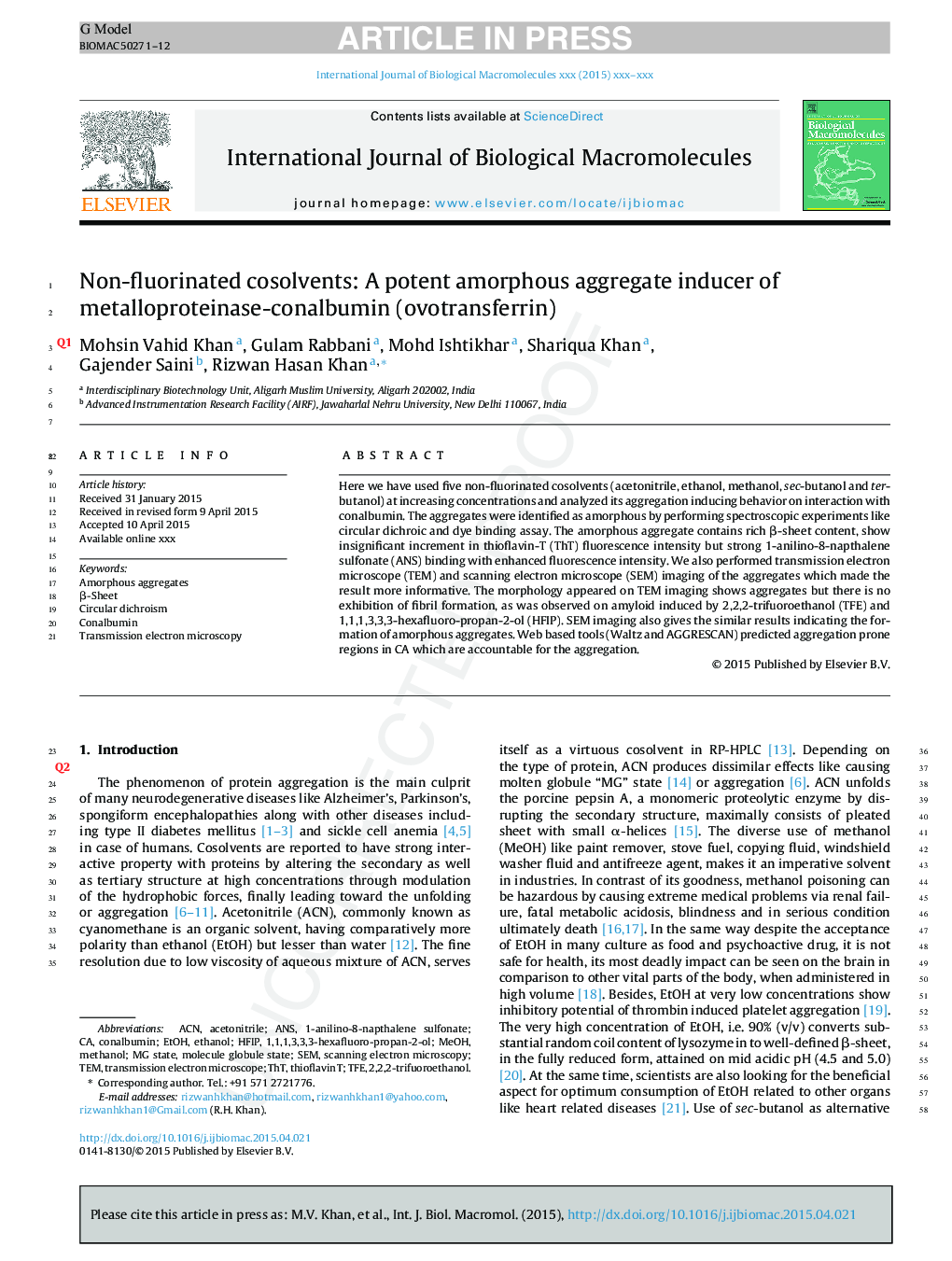| Article ID | Journal | Published Year | Pages | File Type |
|---|---|---|---|---|
| 8331401 | International Journal of Biological Macromolecules | 2015 | 12 Pages |
Abstract
Here we have used five non-fluorinated cosolvents (acetonitrile, ethanol, methanol, sec-butanol and ter-butanol) at increasing concentrations and analyzed their aggregation inducing behavior on interaction with conalbumin (CA). The aggregates were identified as amorphous by performing spectroscopic experiments like circular dichroism and dye binding assay. The amorphous aggregate contains rich β-sheet content, show insignificant increment in Thioflavin-T (ThT) fluorescence intensity but strong 1-anilino-8-napthalene sulfonate (ANS) binding with enhanced fluorescence intensity. We also performed transmission electron microscope (TEM) and scanning electron microscope (SEM) imaging of the aggregates which made the result more informative. The morphology appeared on TEM imaging shows aggregates but there is no exhibition of fibril formation, as was observed in amyloid induced by 2,2,2-trifuoroethanol (TFE) and 1,1,1,3,3,3-hexafluoro-propan-2-ol (HFIP). SEM imaging also gives the similar results indicating the formation of amorphous aggregates. Web based tools (Waltz and AGGRESCAN) predicted aggregation prone regions in CA which are accountable for the aggregation.
Keywords
Related Topics
Life Sciences
Biochemistry, Genetics and Molecular Biology
Biochemistry
Authors
Mohsin Vahid Khan, Gulam Rabbani, Mohd Ishtikhar, Shariqua Khan, Gajender Saini, Rizwan Hasan Khan,
